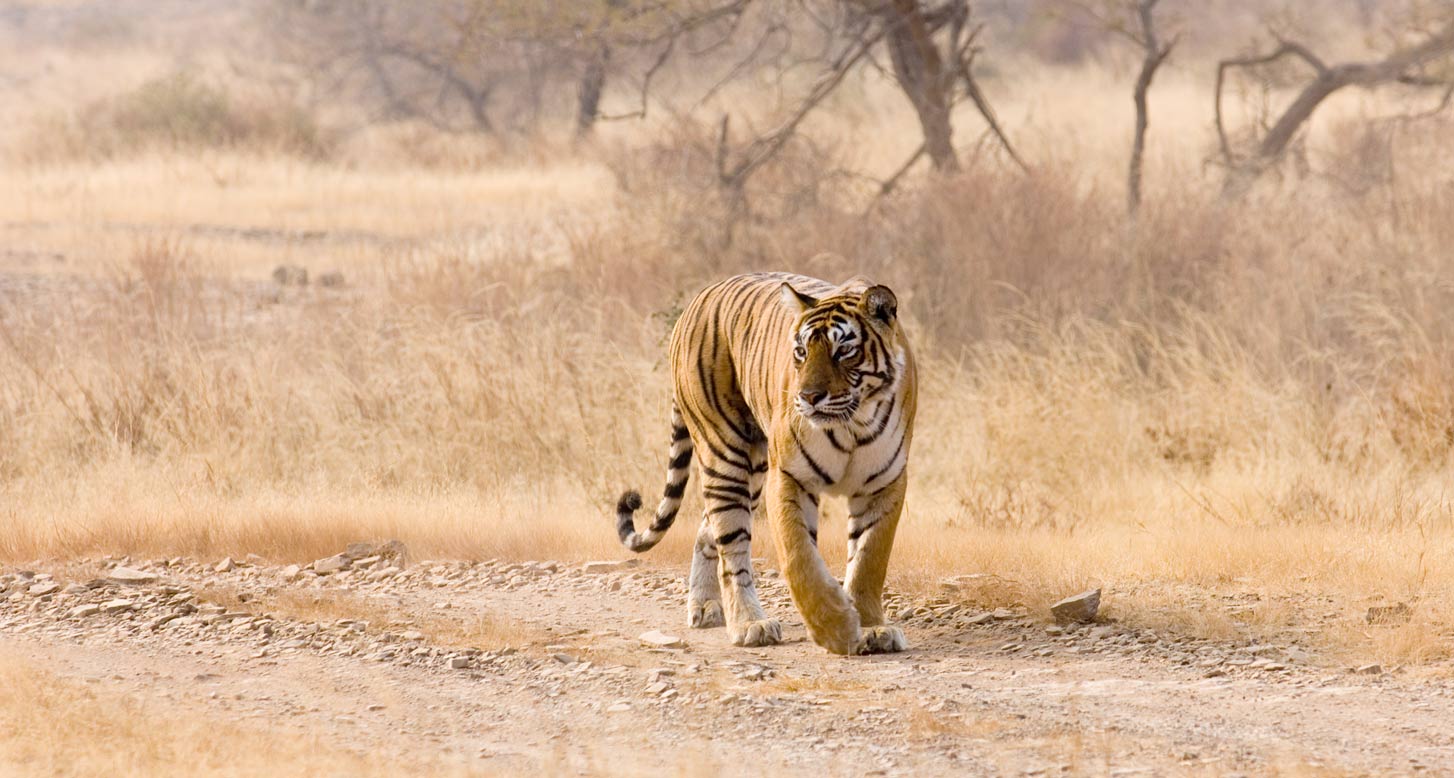
Days
Highlights: Amazing Old Delhi Sightseeing
Description: After checking in this morning we meet our Tour Leader and discuss the tour ahead of us. In the afternoon we head for the narrow streets of Old Delhi. Once capital of the Mughal Emperor Shah Jahan, Old Delhi is a maelstrom of colour, noise and chaos, and, using a mixture of the old and the new - the metro and a cycle rickshaw ride- we reach the Chadni Chowk Bazaar, at the heart of the Old City. A highlight of Old Delhi is the Jami Masjid mosque. Built of red stone, the Jama Masjid, also known as Masjid - e - Jahanuma, is the largest mosque in India. The courtyard of the mosque measures around 1000 square meters and has a capacity of 100,000 people. In the centre of the courtyard is a tank and Hauz. This was built for the purpose of Wazu, compulsory ambulation done before Namaaz. In front of it is a raised platform called the Dikka. The mosque is so big that the Muatllawi (the second cleric), used to stand on the Dikka and repeat the Ayats said by the Imam (the chief cleric) to the devotees who were unable to hear him. The mosque took some 14 years to construct. From the top of the southern minaret there is a view of New Delhi. Nearby is the imposing Red Fort. Built in the 1600s it's imposing red sandstone walls stand over 30 meters above the heart of the Old City which swirls around it. We'll take a rickshaw ride through Chadni Chowk and have a wander through the Spice Bazaar. Be sure to have a camera ready to capture all the wonderful sights including the chaotic electrical wiring, monkeys, traders on bikes with massive loads, and the traffic in general which by some kind of sixth sense and tolerance means drivers and pedestrians seems to just miss each other.
Locations: Delhi
Highlights: Explore New Delhi
Description: After breakfast today we visit the other side of the city: New Delhi. New Delhi was designed by Lutyens and the Parliament Building and the Rajpath are just two reminders of the days of British rule. We visit the India Gate, Rashtrapati Bhawan, the Presidential Palace, Parliament House and Hamayun's Tomb. Around mid-day we transfer to the railway station and board the train for the first stage of our journey to Ranthambore. We arrive in the early evening at Sawai Madhopur station from where we drive the short distance to our hotel just outside the Park.
Locations: Ranthambore National Park
Highlights: Game drives at Ranthambore National Park
Description: Ranthambore National Park lies on the eastern border of Rajasthan, and covers some 400 square kilometres of jungle, lakes and rivers, dotted with temples. The area was originally a private reserve of the Maharajah of Jaipur, but was declared a wildlife sanctuary in 1957. There is a lot to see in this Park: it is generally considered to offer the best chance of spotting tiger - there are around 40 in the Park - but we should also see many species of birds, including kingfisher, parakeet, jacana, and both crested hawk and crested serpent eagle, as well as sloth bear, hyena, pythons, marsh crocodiles, turtles, langur and perhaps leopard. We make an early start today, taking our first game drive around dawn, when the chances of seeing game are highest, before returning for breakfast. Time to relax during the heat of the day, before our afternoon game drive, which we aim to make around dusk, when sightings should again be good.
Locations: Ranthambore National Park
Highlights: Morning game drives at Ranthambore National Park; afternoon optional visit of Ranthambore National park
Description: Today morning we aim to complete our final game drives into the park in search of its wildlife. This afternoon you may wish to go for optional visit of Ranthambore Fort, which overlooks the Park on a hilltop affording views across the park towards the Aravali Hills. This is one of the oldest forts in India, and as well as the magnificent views it has there are a number of temples and mosques as well as an important Ganesh Temple, all spread out over several acres.
Locations: Ranthambore National Park
Highlights: Keoladeo National Park - further included game viewing, this time by cycle or rickshaw. Fatehpur Sikri - included guided tour of one of the finest examples of Mughal architectural splendour at its height.
Description: A busy and rather full day today. We leave very early in the morning for the short drive to Sawai Madhopur, from where we take the train to Bharatpur, a journey of around two or three hours. We transfer then to the Keoladeo Sanctuary. The Bird Sanctuary at Bharatpur is commonly known as the Keoladeo Ghana National Park. The name Keoladeo is derived from the name of an ancient Hindu temple, devoted to Lord Shiva, which lies in the central area of the sanctuary, while the Hindi term 'Ghana' implies dense, thick areas of forest cover The Park covers some dozen square miles, with much of its area under water. Once a duck-hunting reserve for royalty, the Sanctuary is today a world famous ornithological site, offering opportunities to see both breeding water birds and transitory migrants. We aim to visit the park, using cycle rickshaws, giving us a good chance of observing geese, heron, storks, and, if we are lucky, perhaps the rare Siberian Crane, amongst the some 300 species observed here. After our time in the Park we drive to Fatehpur Sikri. Once the site of the Mughul Emperor Akbar's court, the city is now deserted, having been inhabited for just some 16 years after its construction in 1569 before being abandoned. Still standing virtually intact, just as it did in the sixteenth century, the place is a treasure house of royal buildings. In the centre of the main courtyard is the Pachisi Board, once used by the Emperor for games similar to chess, but using live slave girls as pieces. We'll see also the Panch Mahal, towering five stories high, and the remarkable Diwan-i-Khas, with its lotus shaped central pillar. From the silence of Fatehpur Sikri, we drive to Agra, and the bustle of a large modern city. Once Agra was the Mughul capital, and it is home to a number of iconic Mughul structures, the most famous of which is an architectural gem.
Locations: Agra
Highlights: Visit Magnificent Taj Mahal and Agra Fort
Description: Before breakfast we meet our guide and head for the Taj Mahal and Agra Fort. The Taj Mahal has been described as a monument of immeasurable beauty and as the epitome of love. The Mughal Emperor Shah Jahan had this monument constructed in memory of his beloved wife Mumtaz Mahal, with whom he fell in love at first sight Built some 300 years ago, the Taj never fails to stun the viewer with its symmetry and elegance, its perfect proportions making it, in the views of many, the world's perfect building. It certainly impresses in comparison with Humayan's Tomb, in Delhi; an earlier structure in a similar style, but clearly not as perfectly proportioned. The Taj took 22 years to build, using the labour of 20,000 men; the Emperor joined his beloved Mumtaz under the white marble dome of the Taj after his deathThe Agra Fort is built alongside the Yamuna river and stretches almost 2.5 km. It consists of a wall built in red sandstone and several buildings inside. The wall has 2 gates, the Delhi Gate and the Amar Singh Gate. We can only enter the fort via the Amar Singh Gate. On the right as you enter there's the many pillared Diwan-i-Am (Hall of Public Audience). It was built by Shah Janan in 1628. Further on we find the Royal Pavilions. The Fort contains beautiful mosques (Nagina Masjid & Mina Masjid), palaces (Macchi Bhavan, Khas Mahal, Shish Mahal, Shah Jahani Mahal) and the Zenana Mina Bazaar. Several of the buildings are made of pure marble with beautiful carvings. To cool off the rooms in the marble pavilions, the walls were hollow and filled with running water. From the balconies in the pavilions, you have a nice view on the Yamuna river and the Taj Mahal. After exploring the Taj and the Agra Fort the rest of the day is perhaps best spent exploring the bazaar of modern Agra, before we transfer to the railway station in the early evening to catch the express to Delhi. We arrive in the late evening and transfer to our hotel.
Locations: Delhi
Highlights: After breakfast today our tour ends.
Description: Return to Onward Destination
Locations: Delhi
The Tour Includes :
- 6 Nights’ accommodation in mid-range and heritage hotels are standard and not luxurious, All are comfortable and all have facilities such as bar and restaurant.
- Included meals — 6 breakfasts, 2 lunches and 4 dinners. (3 at hotels and 1 on train).
- Tour Leader/Staff – Globally Immersed Indian Tour Leader from Delhi to Delhi; local guides on sightseeing tours, and drivers/ Jeep Drivers,
- Single room option — Available at all night stops on this tour.
- Transport— Private Coach, Train, Cycle Rickshaw, and Cantor (an open truck used for game viewing).
- International flights and taxes
- Single room supplement (if available),
- Comprehensive travel insurance (cover is compulsory)
- Meals other than included
- Gratuities and any items of a personal nature (laundry and drinks etc).



 +91 9810031654
+91 9810031654


